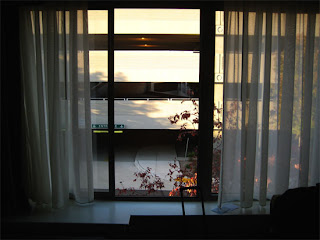I have a feeling that 2009 is going to be a very interesting year for cities. I was listening to MPR a little while ago, and I happened to hear Gary “Milquetoast” Eichten interviewing GOP House minority leader Marty “The Paperweight” Seifert and DFL Sen Dick “Dick” Cohen discussing the terrifying budgetary chasm looming on the State of Minnesota’s fiscal horizon for the next session.
In case you hadn’t heard, the economy has affected the state’s shaky finances to the tune of an over 5 BILLION dollar shortfall for the next two years, which is a huge hole to fill. It’s even larger than that last huge shortfall from the Ventura years, and that one consisted of a combination of draconian cuts and various windfall cash, including the over billion dollar Ciresi tobacco settlement… needless to say, none of those easy money options are available this time around. Which is why I don’t see how they’re going to get out of this hole without a massive sell-off of state assets.
But my favorite part of the Seifert/Cohen discussion was the way that they largely agreed that the budget deficit was simply a matter of perspective. If you were a pessimist, you might see this HUGE hole in our government funding as a bad thing, something that might translate into slashing the state’s already underfunded education, healthcare, and infrastructure systems until we’re all living in Louisiana. But, if you’re an optimist like Seifert, you see this budget hole as an “opportunity”, a once-in-a-lifetime chance to innovate, renovate, and rethink how government is accomplished. And this is why the budget hole isn’t a bad thing at all, and why the Taxpayers League was “cheering” when Pawlenty announced this month that aid to cities, higher education, and healthcare services would be cut by almost half a billion dollars statewide.*
Well, I’m game. I started trying to think how the State of Minnesota could provide health care, transportation infrastructure, public education, and public safety for five million people without actually spending any money, and I think its possible.
If you think about it, the “state government” has thousands of people working for different “agencies”, where all they do is sit around and stare at computers all day. Do you know how many “government departments” the state of Minnesota has? Who knows what they’re doing… they’re certainly not producing anything, helping people, or accomplishing goals. We could probably get by with only a fraction of these “state employees”.
Go ahead, pick any “government agency” you like, and I bet you can find ways to cut and rethink how we deliver government services. Take for example, a random agency… Let me see… how about the “Department of Transportation”. Did you know they just hired eight new “bridge inspectors”? What the hell do these people do all day? Apparently they dangle around in cherry-pickers looking at “gusset plates” or something.
Well, I have no idea what that means, but we certainly don’t need to have that many “bureaucrats” dorking around on our highway bridges staring at their navels. We just need to rethink how we deliver government services, and I’m going to suggest that we get rid of the Department of Transportation’s Bridge Inspectors, and replace them with ... Hell, it doesn't matter.
God Forbid, if a bridge ever does fall down, it’s not like we couldn’t just get the Federal Government to pony up for a brand new replacement bridge. Presto!, you’ve got a whizzbang infrastructure investment program and hundreds of new construction jobs.
And I’m sure that the Department of Transportation is just the tip of the iceberg. We could see similar rethinking opportunities in healthcare and education. We could, for example, start a program “homeschooling” our young children in basic medical knowledge, like suturing gunshot wounds and treating chronic depression. Two birds, one stone, if you know what I mean. Or we could replace the state’s snowplows with a voluntary/mandatory interstate highway snowshoveling program that would build community while providing much needed cardiovascular exercise for our commuters. And those are just two ideas!
So, in the coming year, I’d like to see our legislators thinking outside the box. After all, as Condoleeza Rice once said, the Chinese character for “crisis” is the same as the character for “opportunity”.

[These bureaucrats are a golden opportunity for rethinking government waste.]
* The recent cuts will no doubt end in higher property taxes and worse city services for the poorest cities in the state:
Cities and counties will absorb the largest share of the cuts, a combined total of $110 million in state aids and tax credits. Small cities with populations under 1,000, and counties under 5,000, were exempt from the cuts. Pawlenty insists the cuts are manageable for local government and he repeated a warning to city leaders not to cut police and fire protection.























